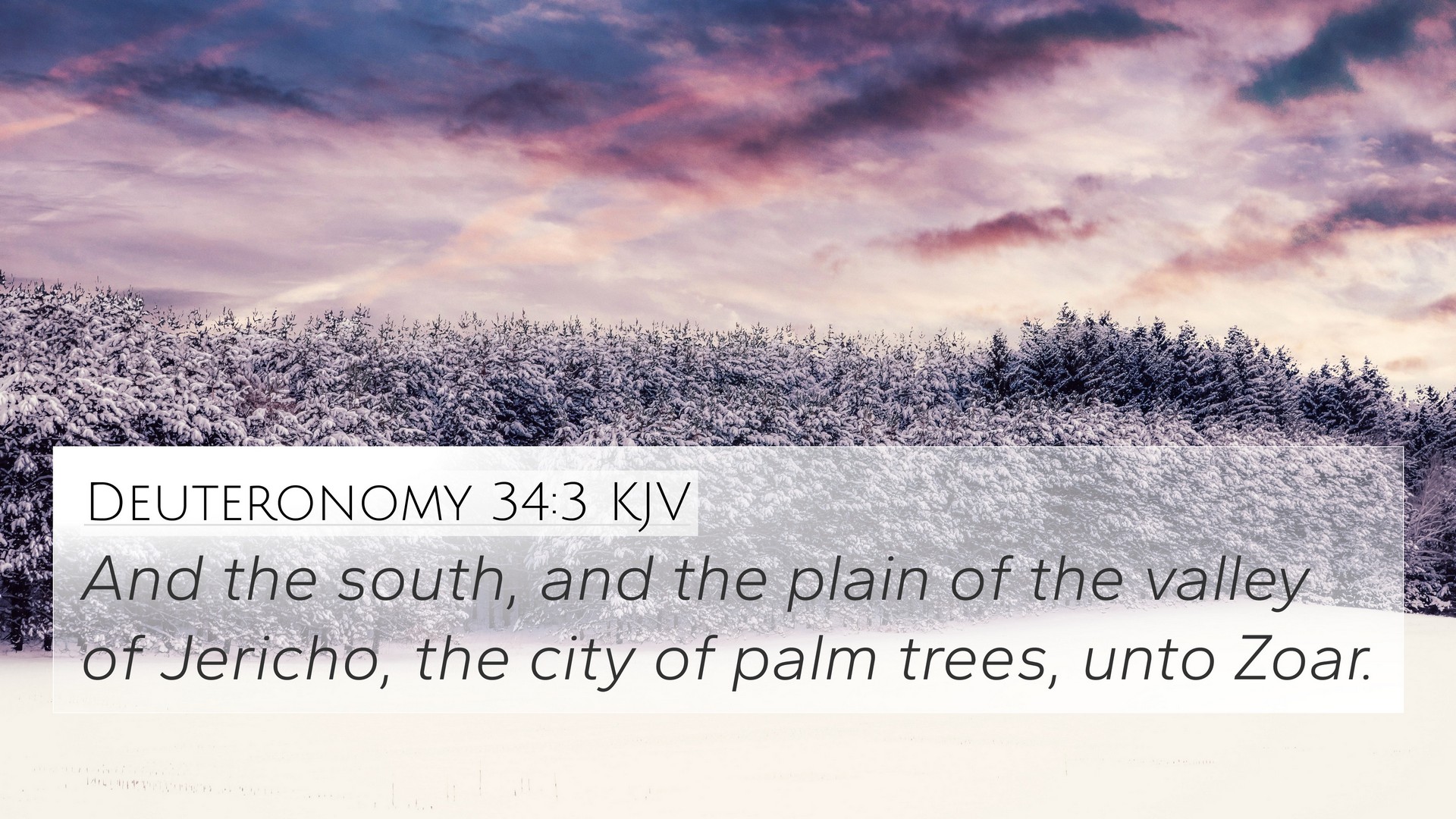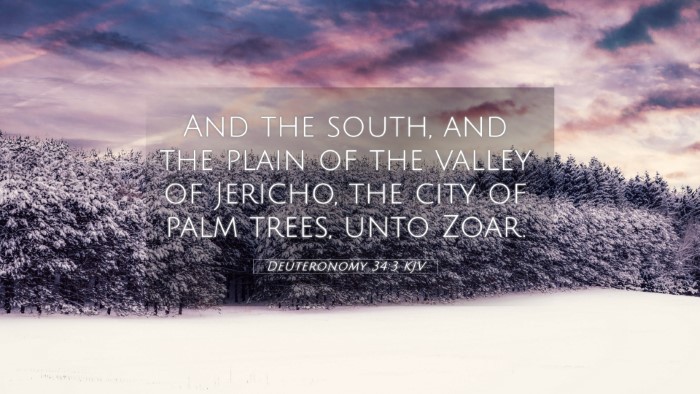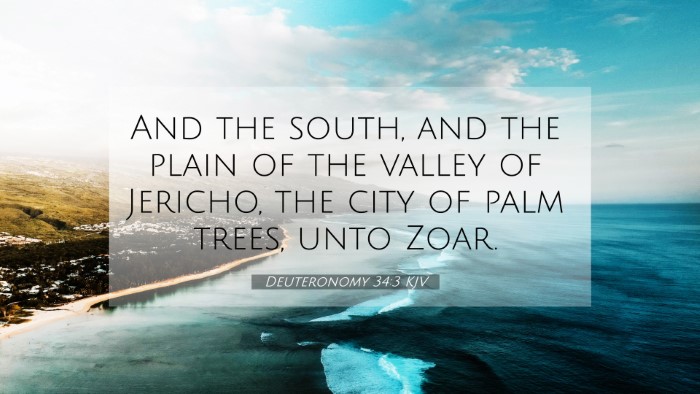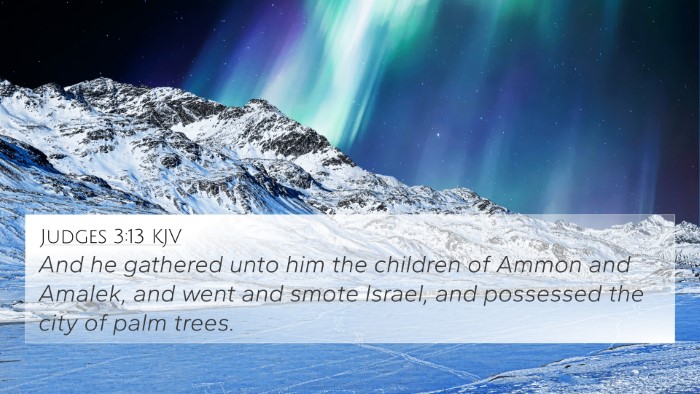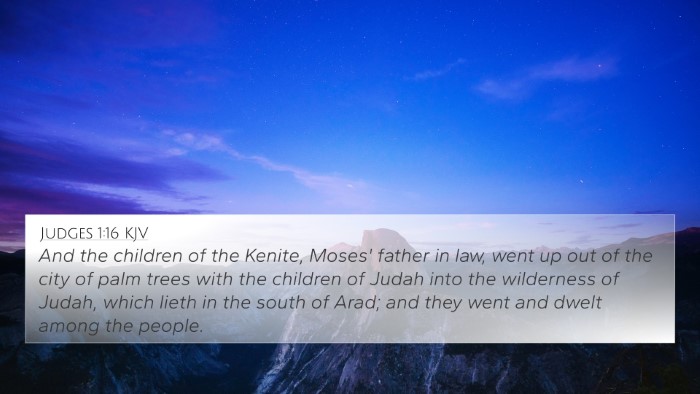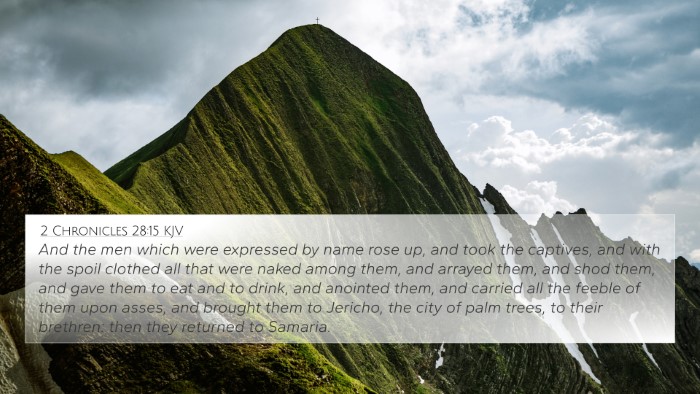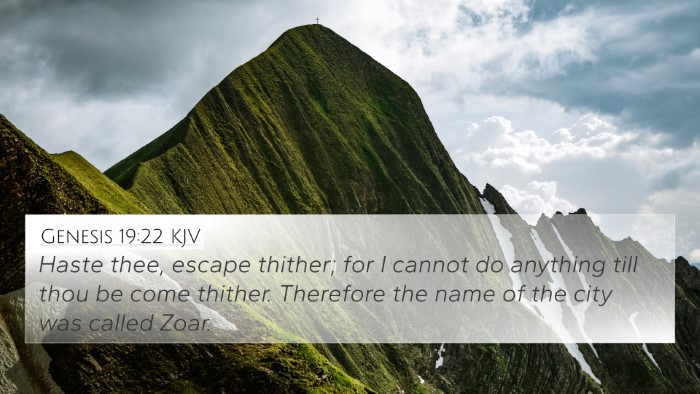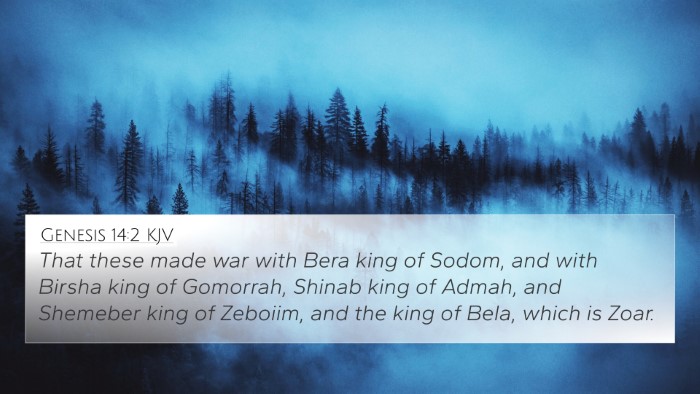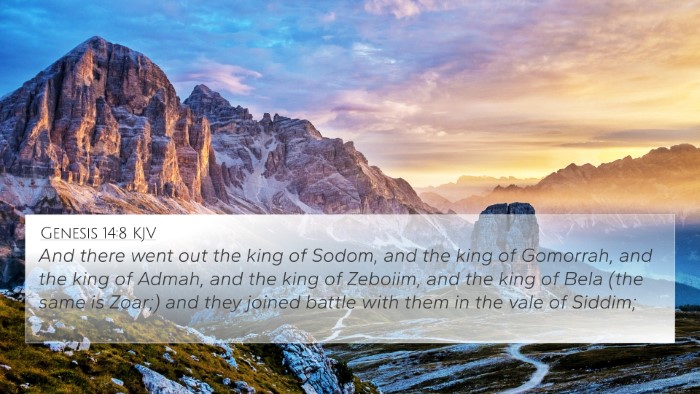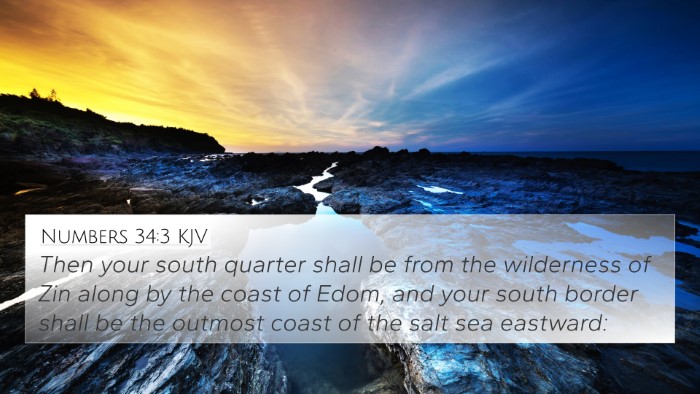Understanding Deuteronomy 34:3
Deuteronomy 34:3 states:
“And the plain of the valley of Jericho, the city of palm trees, unto Zoar.”
This verse is part of the conclusion of Moses' life and ministry. It serves as a reflection on the land that the Israelites were about to enter, emphasizing the beauty and richness of the Promised Land.
Summary of Verse Meaning
The meanings derived from various public domain commentaries highlight several key points about Deuteronomy 34:3:
- Matthew Henry: He emphasizes that this verse illustrates the location of Jericho, known for its fertility and abundance. Henry notes that it reflects God's promise to give the Israelites a land flowing with milk and honey.
- Albert Barnes: Barnes elaborates on the geographical significance of Jericho, indicating that it was strategically located and a gateway to the rich landscape of Canaan. He also points out that Jericho, being the "city of palm trees," indicates prosperity.
- Adam Clarke: Clarke discusses the symbolic meaning of the palm trees, representing victory and palm branches often associated with triumph. He suggests that this lush landscape could serve as a prelude to the blessings the Israelites were to receive.
Key Insights from Commentaries
Combining the insights from these commentaries, we can summarize the following themes:
- Promises of God: The mention of Jericho reminds us of God’s faithfulness in fulfilling His promises to His people.
- Productivity and Abundance: The lushness of the region, described as the "city of palm trees," signifies the abundance and well-being that awaits the Israelites.
- Transitional Moment: This passage functions within the broader narrative as a transitional moment between Moses' leadership and the new phase under Joshua's guidance.
Bible Verse Cross-References
This verse connects well with several other biblical passages, enhancing its meaning through cross-references:
- Numbers 34:3-4: Description of the borders of the Promised Land.
- Deuteronomy 11:30: Mention of the city of palm trees.
- Joshua 3:16: The crossing of the Jordan River near Jericho.
- Luke 19:1: The story of Zacchaeus in Jericho, linking the city's historical significance.
- Revelation 22:2: The imagery of trees in the New Jerusalem, linking new life and health to the motif of trees.
- Psalm 92:12: The righteous flourishing like palm trees, reinforcing the life-giving connotations.
- Jeremiah 10:5: The reference to idols made of trees reflects the profound connection of the land in worship.
How to Utilize Cross-Referencing
Using cross-references is essential for a deeper understanding of scripture. Tools for Bible cross-referencing, such as a bible concordance or a bible cross-reference guide, aid in linking scriptures effectively. Here are some methods:
- Utilize a bible reference resources for thematic study.
- Engage in bible cross-reference study by comparing verses that discuss similar themes.
- Identify connections between the Old and New Testament to see how God’s plans unfold historically.
- Explore cross-referenced themes in the Bible by investigating the same topic across different books.
Inter-Biblical Connections
Understanding inter-Biblical dialogue allows us to trace how themes in Deuteronomy 34:3 resonate throughout scripture, illustrating the continuity of God’s plan. For instance:
- Victory through God: The triumph anticipated for the Israelites connects with themes of redemption found in the New Testament.
- Symbolism of Abundance: The lush representations in Deuteronomy can be seen in the spiritual abundance conveyed in Christ’s teachings.
Conclusion
In conclusion, Deuteronomy 34:3 serves as a powerful reminder of God’s promises and the rich blessings awaiting His people. By examining this verse through various commentaries and employing cross-referencing techniques, we enrich our biblical understanding and engage more deeply with God’s Word.
